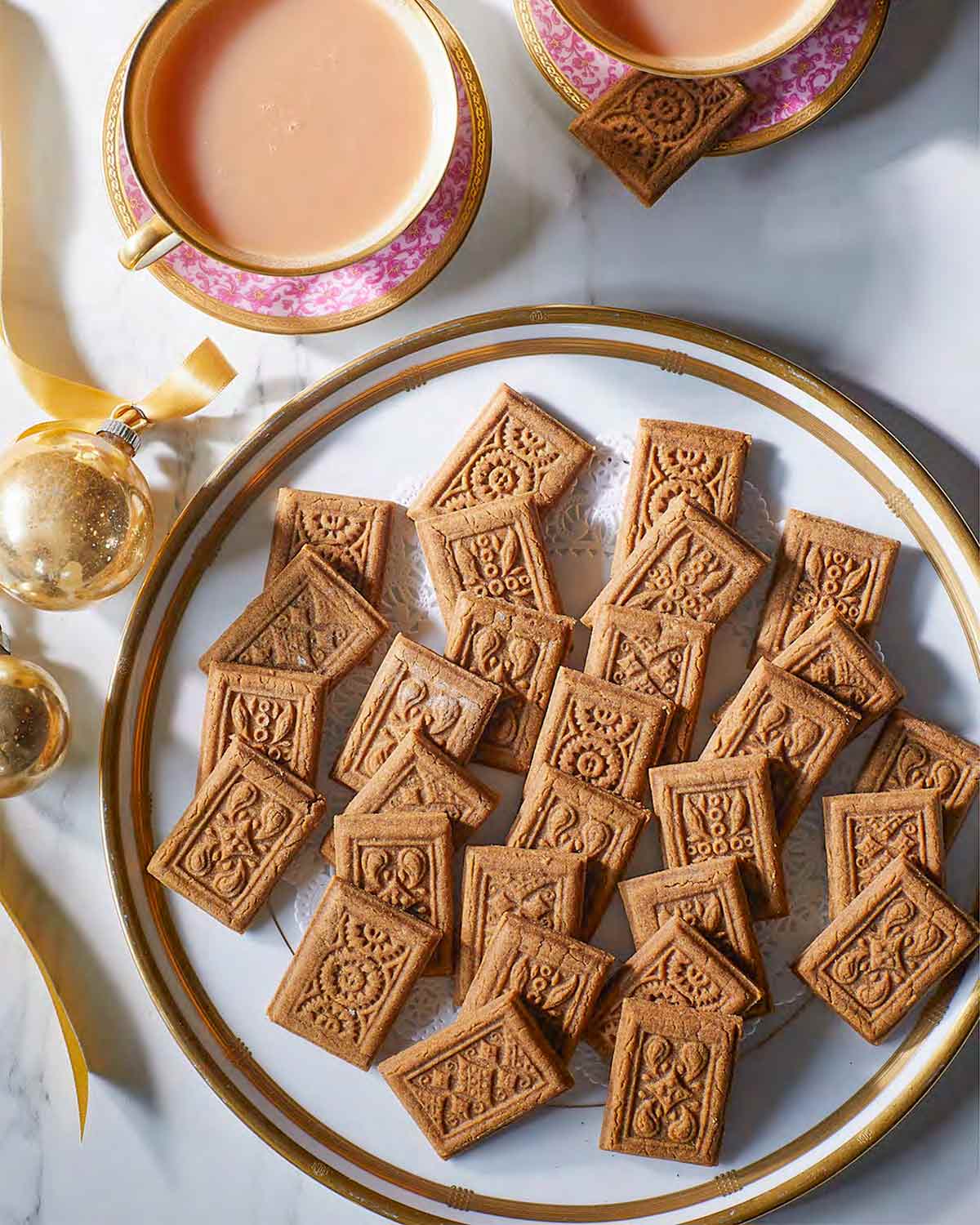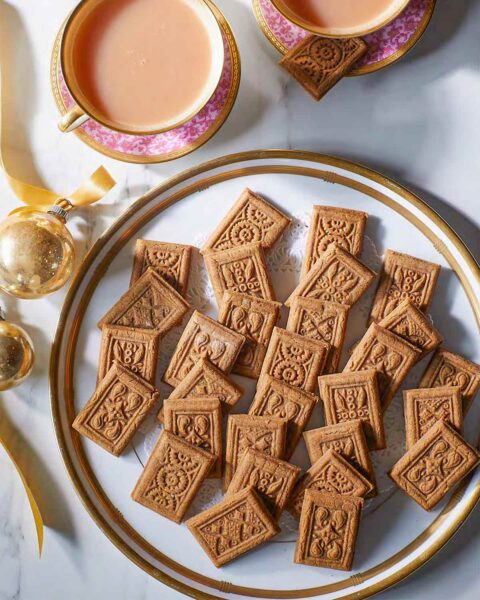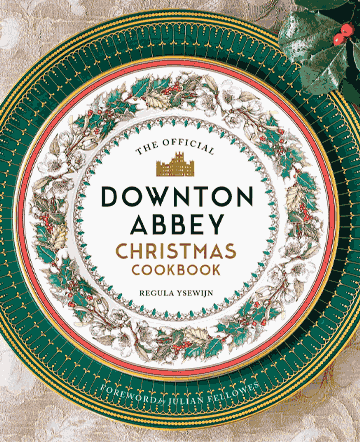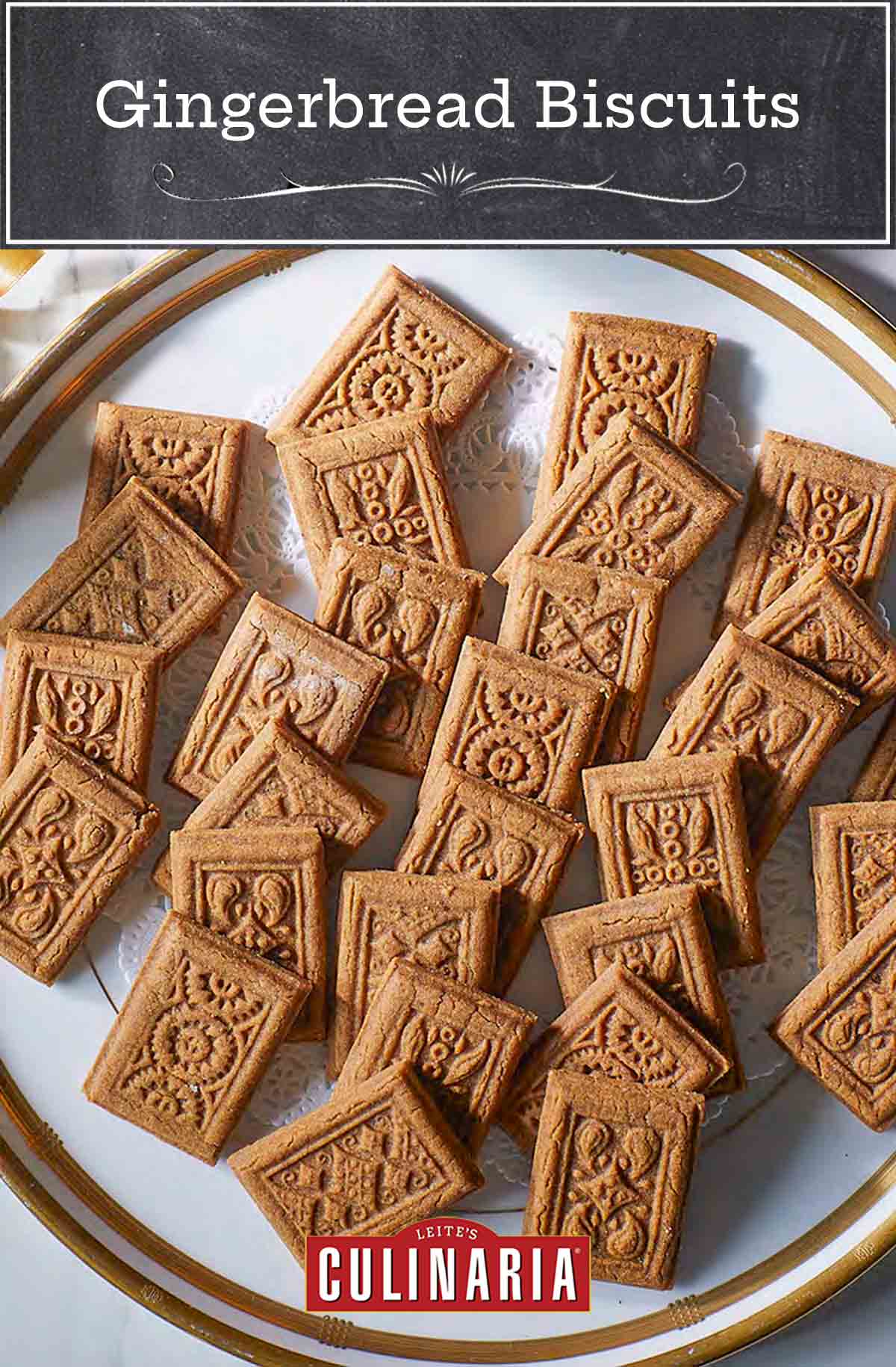
Gingerbread, which has a long history in much of Europe, first appeared in English cookery books in the late fourteenth century. It was often molded into human shapes—frequently lovers, sometimes even kings and queens—using a wooden mold. According to The Oxford Companion to Sugar and Sweets, Elizabeth I commanded her kitchen to shape gingerbread to resemble her courtiers, suitors, and others, which she would then have served to them. By the early nineteenth century, a similar custom was popular at local fairs, where gingerbread “husbands” were bought by girls looking for a sweetheart. Simpler shapes, such as large squares and freeform biscuits, were sold as well, both at fairs and at bakeries. In the Victorian era, gingerbread figures became popular Christmas-tree ornaments.—Regula Ysewijn
Want to Save This?
Gingerbread Biscuits FAQs
If you have difficulty removing the gingerbread from the parchment, flip it over onto the baking sheet (after you’ve removed the cookie cutters and scrap dough first), and peel the floured sheet of parchment off the dough.
Black treacle is what is used as molasses in the United Kingdom. It’s somewhere between molasses and blackstrap molasses. If you have both, we’d suggest mixing them half and half to achieve the balance of sweet and bitter. If not, use just regular molasses—using just blackstrap molasses will make the biscuits too bitter. The author also suggests using golden syrup or light molasses if you want a lighter flavor.

Gingerbread Biscuits
Ingredients
- 1 3/4 cups all-purpose flour, plus more for the parchment and the mold (if using)
- 1 tablespoon ground ginger
- 1/4 teaspoon ground allspice
- 1/4 teaspoon ground mace
- 6 tablespoons (3 oz) unsalted butter, at room temperature
- 1/4 cup firmly packed dark brown sugar
- 1/2 cup black treacle or dark (medium) molasses
Instructions
- Preheat the oven to 275°F (135°C). Line two rimmed baking sheets with parchment paper.
- In a large bowl, whisk together the flour, ginger, allspice, and mace. Add the butter and, using your fingers, rub it into the flour mixture until the mixture is the consistency of coarse bread crumbs.
- Add the sugar and stir with a wooden spoon until fully incorporated. Pour in the treacle or molasses and mix until blended.
- Knead the dough in the bowl until smooth and evenly dark, about 2 minutes.
- Lay a sheet of parchment paper on a work surface, dust it lightly with flour, place the dough in the center, and pat it into a thick, fat disk.
- If using a cookie cutter, roll out the dough a scant 1/4 inch (6 mm) thick. Using a cutter in any shape you like, cut out as many biscuits as possible. Move them to the prepared pans, spacing them about 3/4 inch (2 cm) apart. Gather up the scraps, roll out, cut out more biscuits, and add to the pans.
- If using a wooden gingerbread mold, roll out the dough about 1/3 inch (8 mm) thick or thicker, depending on the depth of the carving. Dip the mold into water and dust lightly with flour. Cut a piece of rolled-out dough about 1 1/4 inches (3 cm) larger than the carving. Lay it on the prepared mold, then roll the rolling pin over the mold, pushing the dough into the carving. Trim any excess dough from the edge of the mold and turn the biscuit out onto a prepared pan. Repeat to make as many biscuits as possible, adding them to the pans and spacing them about 1 inch (2.5 cm) apart. Gather up the scraps, roll out, press out more biscuits, and add to the pans.
- Bake the biscuits, rotating the pans back to front halfway through baking, until crisp, about 30 minutes. Let cool on the pans on wire racks for 5 minutes, then transfer the biscuits to the racks and let cool completely.

Explore More with AI
Nutrition
Nutrition information is automatically calculated, so should only be used as an approximation.
Recipe Testers’ Reviews
This old-fashioned British gingerbread biscuits recipe has a nice level of ginger spice, which provides a wonderfully sharp kick at the back end of each bite that lingers a bit too. The recipe comes together very quickly, and it’s probably a great one to make with the kiddos!
My family LOVES gingerbread so when this gingerbread biscuits recipe came across my laptop I knew we had to give it a try. Plus, since it didn’t require any ingredients that I didn’t have on hand AND used mace which I purchased for another recipe and haven’t used up, it had all the marks of a winner.
I chose to use a round biscuit cutter for my cookies after using my “impression” rolling pin (which presses holly leaves into the dough) and using my 2-inch biscuit cutter I only got 13 cookies so the amount of these cookies is also quite a bit off if not made in a smaller size. I also rolled them 1/4-inch thick (using rolling pin measuring sticks) and they didn’t crisp up but weren’t unpleasant, just not “crispy”.
All that said, I believe with a few tweaks this could be a very delicious cookie for dunking in coffee or a glass of milk. I think adding a bit of cinnamon (perhaps 1 tbsp) to balance the ginger/allspice/mace would be a good start. Also, rolling them thinner if a crispier cookie is desired would also be recommended. Using the weighted measurements for the flour, my dough was very sticky so I would suggest either increasing the flour used initially or being prepared to use quite a bit when rolling.











